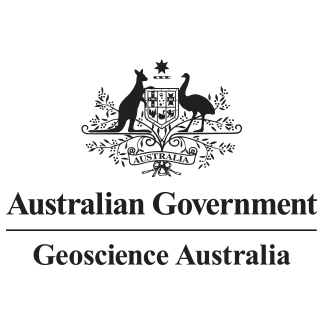Brief description
A predictive model of weathering intensity or the degree of weathering has been generate over the Australian continent. The model has been generated using the Random Forest decision tree machine learning algorithm. The algorithm is used to establish predictive relationships between field estimates of the degree of weathering and a comprehensive suite of covariate or predictive datasets. The covariates used to generate the model include satellite imagery, terrain attributes, airborne radiometric imagery and mapped geology. The weathering intensity model is an estimate of the degree of surface weathering only. The interpretation of the weathering intensity is different for in-situ or residual landscapes compared with transported materials within depositional landscapes. In residual landscapes, weathering process are operating locally whereas in depositional landscapes the model is reflecting the degree of weathering either prior to erosion and subsequent deposition, or weathering of sediments after being deposited. The degree of surface weathering is particularly important in Australia where variations in weathering intensity correspond to the nature and distribution of regolith (weathered bedrock and sediments) which mantles approximately 90% of the Australian continent. The weathering intensity prediction has been generated using the Random Forest decision tree machine learning algorithm. The algorithm is used to establish predictive relationships between field estimates of the degree of weathering and a comprehensive suite of covariate or predictive datasets. The covariates used to generate the model include satellite imagery, terrain attributes, airborne radiometric imagery and mapped geology. Correlations between the training dataset and the covariates were explored through the generation of 300 random tree models. An r-squared correlation of 0.85 is reported using 5 K-fold cross-validation. The mean of the 300 models is used for predicting the weathering intensity and the uncertainty in the weathering intensity is estimated at each location via the standard deviation in the 300 model values. The predictive weathering intensity model is an estimate of the degree of surface weathering only. The interpretation of the weathering intensity is different for in-situ or residual landscapes compared with transported materials within depositional landscapes. In residual landscapes, weathering process are operating locally whereas in depositional landscapes the model is reflecting the degree of weathering either prior to erosion and subsequent deposition, or weathering of sediments after being deposited. The weathering intensity model has broad utility in assisting mineral exploration in variably weathered geochemical landscapes across the Australian continent, mapping chemical and physical attributes of soils in agricultural landscapes and in understanding the nature and distribution of weathering processes occurring within the upper regolith. Value: Weathering intensity is an important characteristic of the earth's surface that has a significant influence on the chemical and physical properties of surface materials. Weathering intensity largely controls the degree to which primary minerals are altered to secondary components including clay minerals and oxides. In this context the weathering intensity model has broad application in understanding geomorphological and weathering processes, mapping soil/regolith and geology. Scope: National dataset which over time can be improved with additional sites for training and thematic datasets for prediction.Lineage
Maintenance and Update Frequency: annually
Statement: Source: Source dataset include field site observation and measurements and thematic grids including terrain attributes (i.e. relief, slope, landscape position), satellite imagery and geophysical dataset (i.e. airborne radiometrics)
Form: Floating point geotiff with values ranging from 0-6. Zero indicating least weathered to 6 being completely or very highly weathered.
This Collection record was created to enhance the discoverability and management of the individual products contained in the collection. See the individual eCat records for product specific lineage.
Form: Floating point geotiff with values ranging from 0-6. Zero indicating least weathered to 6 being completely or very highly weathered.
This Collection record was created to enhance the discoverability and management of the individual products contained in the collection. See the individual eCat records for product specific lineage.
Notes
PurposeWeathering intensity is an important characteristic of the earth’s surface that has a significant influence on the chemical and physical properties of surface materials. Weathering intensity largely controls the degree to which primary minerals are altered to secondary components including clay minerals and oxides. In this context the weathering intensity model has broad application in understanding geomorphological and weathering processes, mapping soil/regolith and geology.
Issued: 24 02 2022
Data time period: 2018-05-01
text: westlimit=112.00; southlimit=-44.00; eastlimit=154.00; northlimit=-9.00
Subjects
AS/NZS 1170.2 |
DC2020 |
GEOCHEMISTRY |
HVC - High Value Collection |
HVC_144633 |
Published_External |
Soil |
Weathering Process |
Weathering degree |
geoscientificInformation |
impact |
regolith |
surface roughness |
terrain |
topography |
weathering intensity |
wind |
User Contributed Tags
Login to tag this record with meaningful keywords to make it easier to discover
Identifiers
- URI : pid.geoscience.gov.au/dataset/ga/144633

- global : 9cc736aa-6057-4419-8bc5-110e9878e47e


